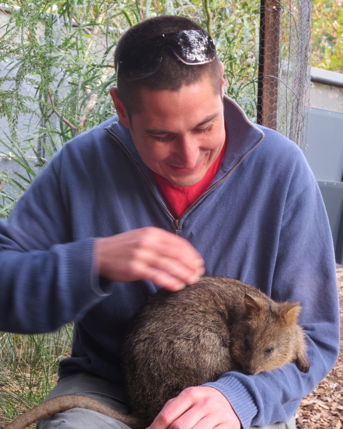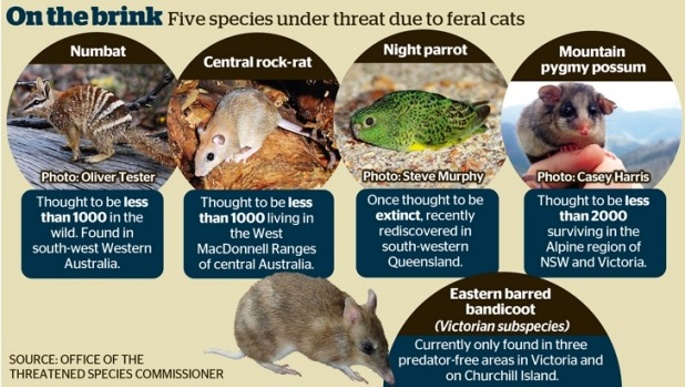Engineering nature's defences to save native Australian animals from extinction

Anton Blencowe and wombat friend
Dr Anton Blencowe, son of Stewart and Linda Blencowe of Gloucester, UK, is Senior Lecturer in Chemistry at University of South Australia. He leads a research team in the School of Pharmacy and Medical Sciences who, with a group of conservationists and scientists, is working to safeguard the survival of native Australian animals. They are developing a new 'population-protecting implant' using a native plant poisonous to feral cats (but not native animals) which could ensure the survival of endangered native Australian animals.
Sadly, we have seen a significant decline of native animals in Australia since European settlement, largely due to the introduction of foreign animals - particularly feral cats.
The exciting and innovative new technology - the 'population-protecting implant' - has the potential to help save Australian native animals from extinction and assist with protecting vulnerable fauna re-introduction programs.

Incredibly, just one feral cat can kill hundreds of native Australian animals throughout its life-span.
Experts and the federal government have recognised that the feral cat population needs to be significantly reduced to tackle the threat they present to the natural ecosystem. More specifically, recent research has shown that individual cats can target reintroduced or rare animals and cause catastrophic impact.
We believe we have a solution to control the threat from feral cats
We have a new approach to feral cat control that could help to safeguard threatened species such as quolls, quokkas, wallabies, bettongs, bandicoots and many more vulnerable native species. It is designed to provide a more targeted method of controlling feral cats and foxes that reduces potential exposure of non-target animals to toxins.
Dr David Peacock approached Anton with encouraging results that he discovered as part of his PhD. He realised that a solution to the feral cat problem may lie in the seeds from native poisonous plants, Gastrolobium, found in south-west Western Australia. He learnt that Australian animals that feed on these plants have a high tolerance to the poison and are not affected by it, but the animals themselves can then become poisonous to feral cats that prey on them. This presents an exciting opportunity for protecting native animal populations.
Using the natural poison found in these plants, we have created an inert implant - the size of a grain of rice - that can be injected under the skin of a native animal. The implant is coated in such a way that it remains harmless to the animal for the duration of its life and is only activated (releases the poison) if the animal is eaten by a feral cat - such as the ones causing significant problems throughout Australia, New Zealand and elsewhere.
If the animal is eaten by a larger native predator, then the small amount of natural poison would not be enough to harm the larger predator because of their much higher tolerances.
If the animal lives out its life and dies naturally, as we hope it will, the capsule will safely reintegrate into the environment.
Effectively, each native animal that has been implanted acts as a Trojan to improve the chances of survival of the remaining native animal population. For every native animal that is unfortunately attacked and eaten by a cat, hundreds of other native animals will be saved thanks to the implant.
Research indicates targeting the cats doing the killing is critical, though often very difficult to achieve. Therefore the implants should make the difference between success and failure for many fauna re-introduction programs and vulnerable populations.
The website for more details and support for the cause is - www.chuffed.org/project/save-aussie-animals
A note from Anton
The broader we can distribute this information then the more likely we are to be successful as well as make people aware of the threats posed by feral cats to the survival of our native animals.
Thanks,
Anton Blencowe,
South Australia